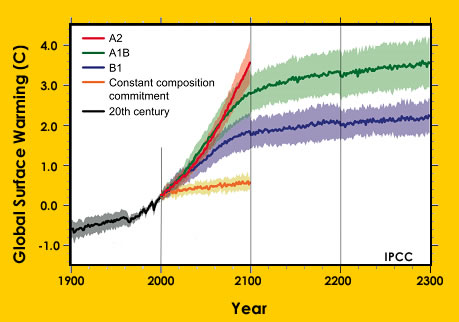Click on image for full size
Image Courtesy of George Denton
Glacial Advances
News story originally written on April 29, 2009
Most of the world's glaciers are melting as the planet gets warmer. But a few, including glaciers south of the equator in South America and New Zealand, are growing larger. For the last 7,000 years, New Zealand's largest glaciers have often acted differently than glaciers in the Northern Hemisphere. This is a reminder that there are often regional variations in climate in different locations on the Earth.
Glaciers are extremely sensitive to changes in temperature and snowfall, which makes them helpful for studying past climate. But it is very difficult to determine the exact ages of glaciers from the past. One way to measure changes in glaciers is by studying the moraines, or rock deposits, that glaciers often leave behind when they begin to melt.
Scientists recently used a new method to learn the ages of the rocks in the moraines in New Zealand. This method is called cosmogenic dating, and it tells scientists exactly when the glaciers in New Zealand's Southern Alps began to melt. The scientists used this data to compare New Zealand's glaciers with glaciers in Europe. They learned that during the past 7,000 years glaciers in New Zealand were very large at times when the glaciers in the Swiss Alps and Scandinavia were melting due to warm weather.
Overall, glaciers around the world have been melting since about 1860, except for a brief advance of the glaciers in Switzerland in the 1980s, in New Zealand in the late 1970s through today, and in a few other places. Changes in wind and sea surface temperatures are thought to be causing these regional changes. Though it is wet in New Zealand right now, scientists think the climate is expected to swing back to a warmer, drier phase in the next few years, causing the glaciers to melt once again.















